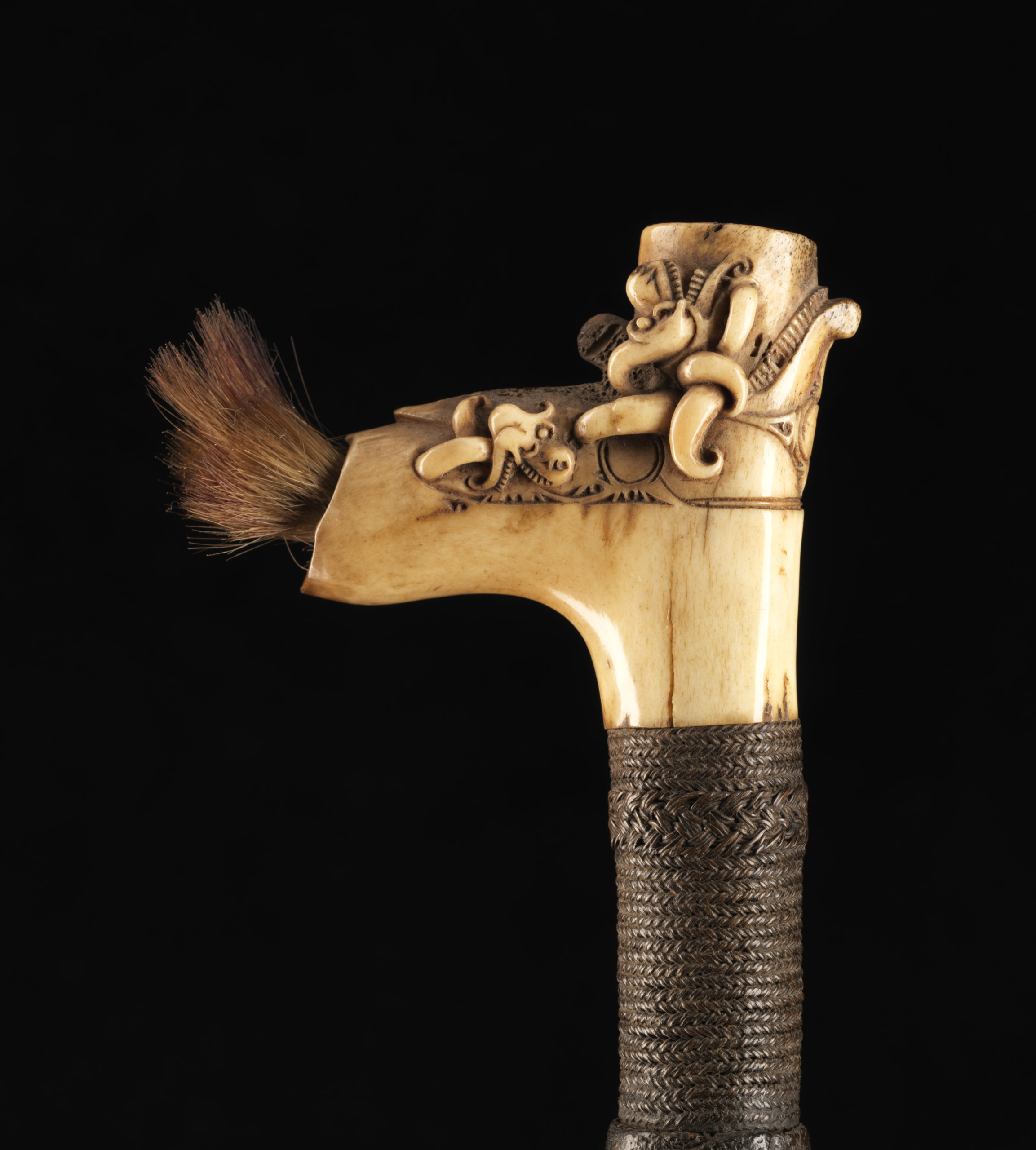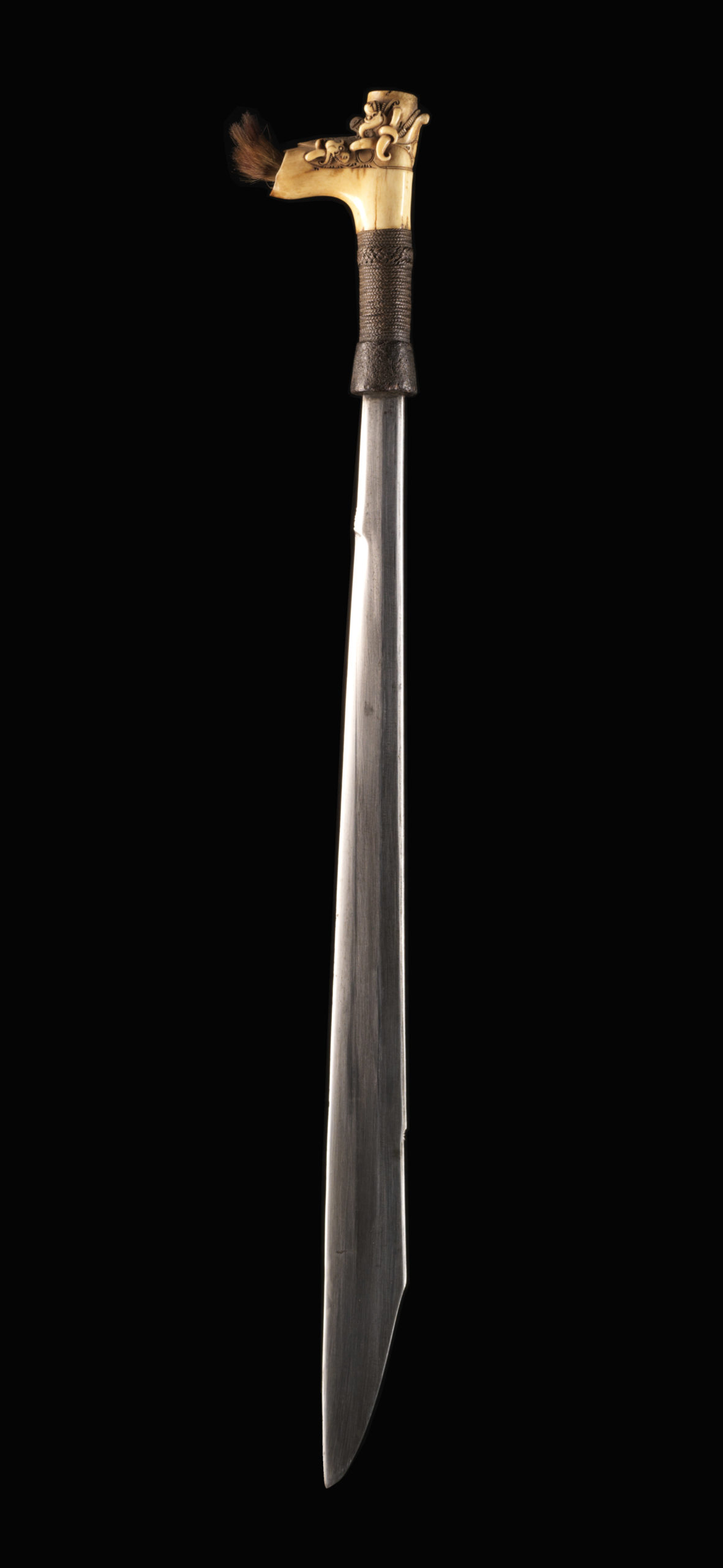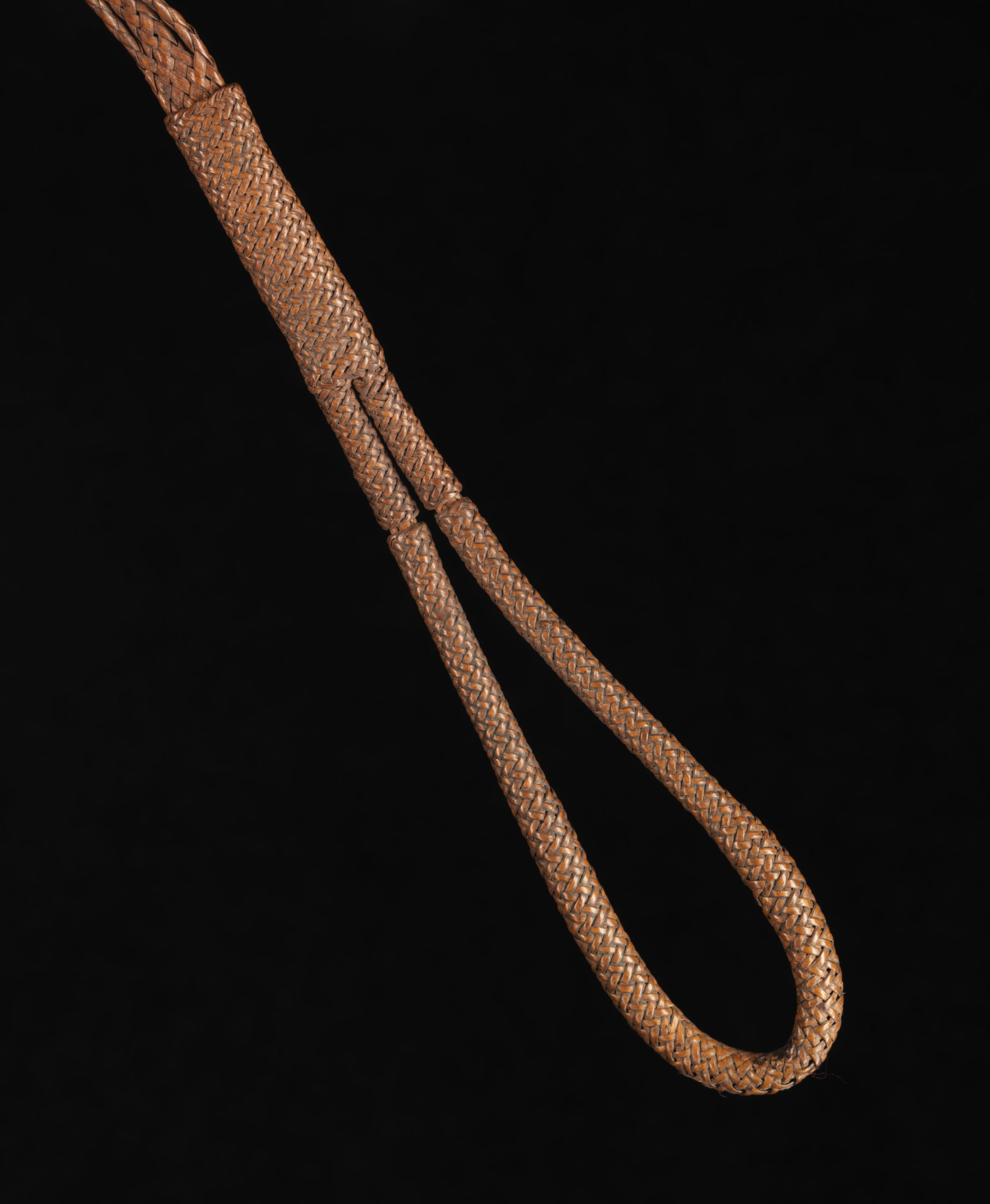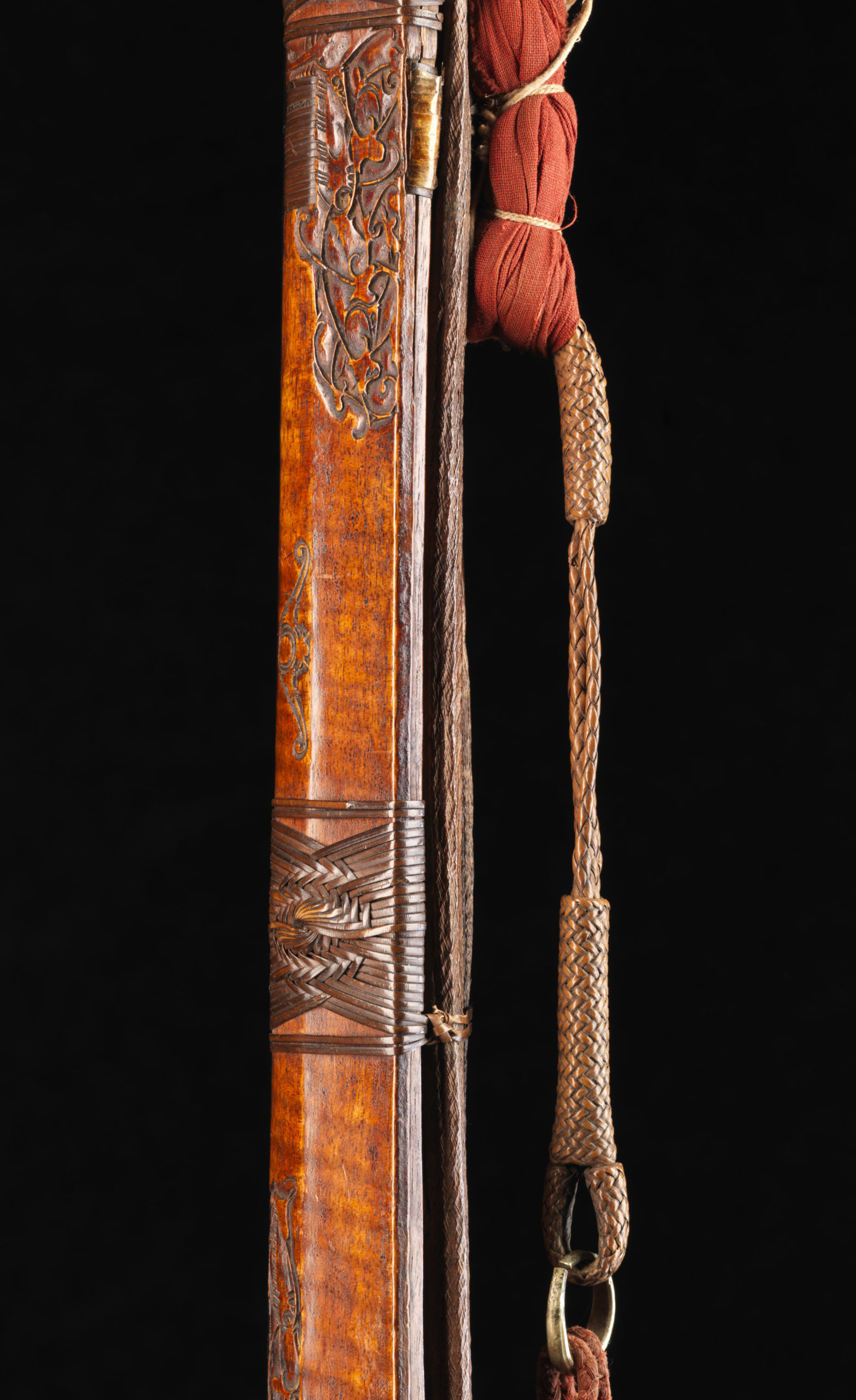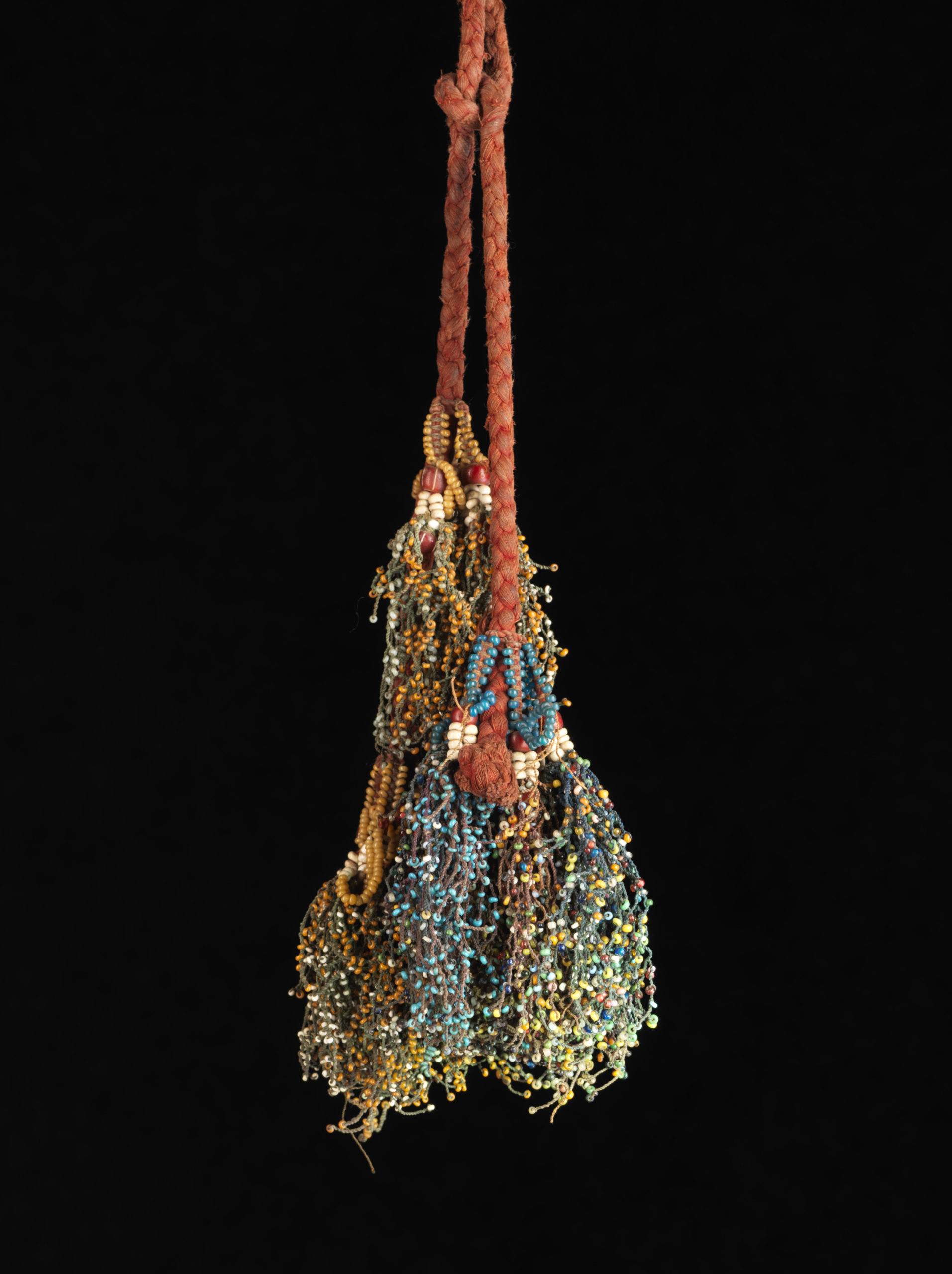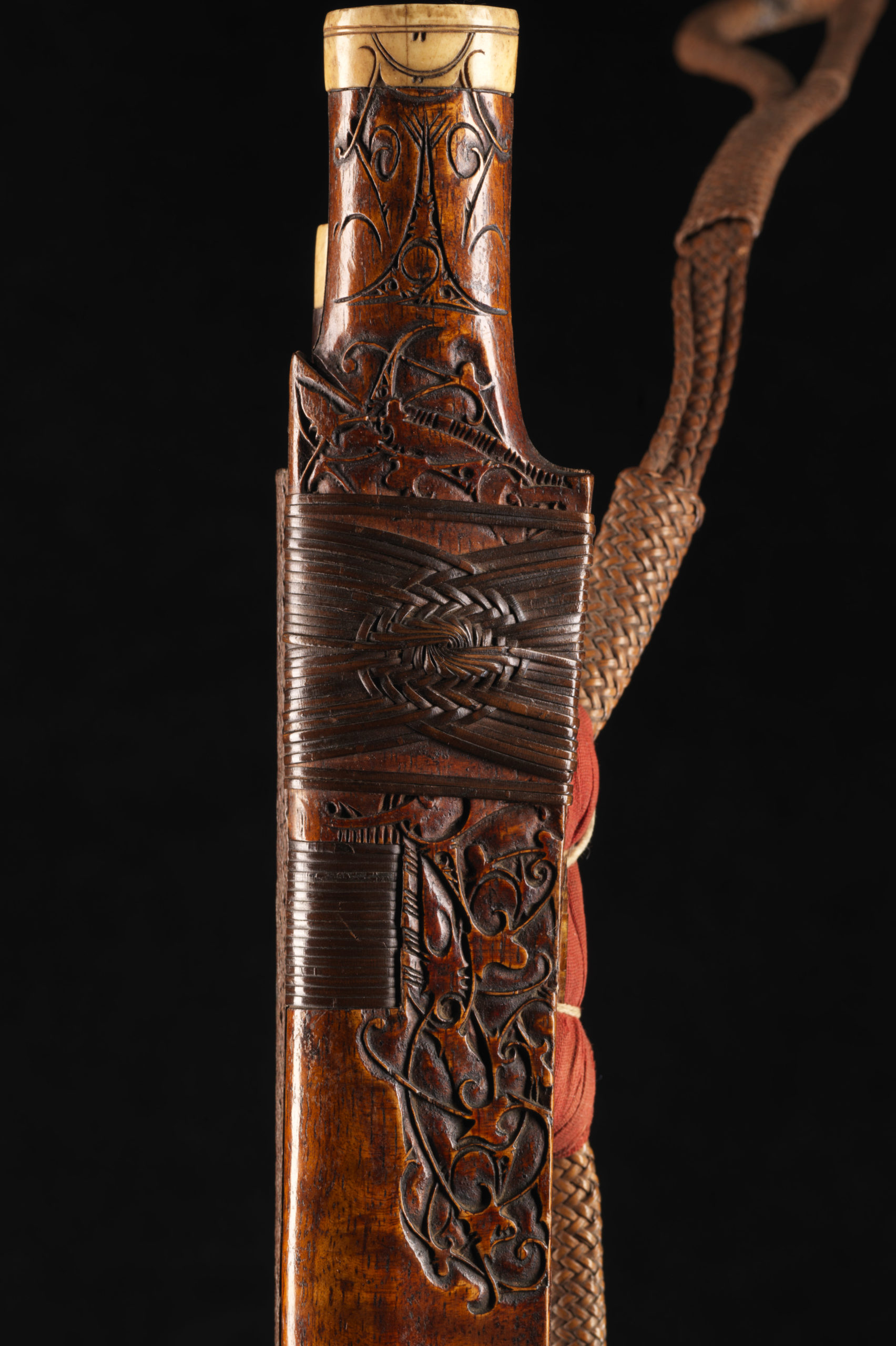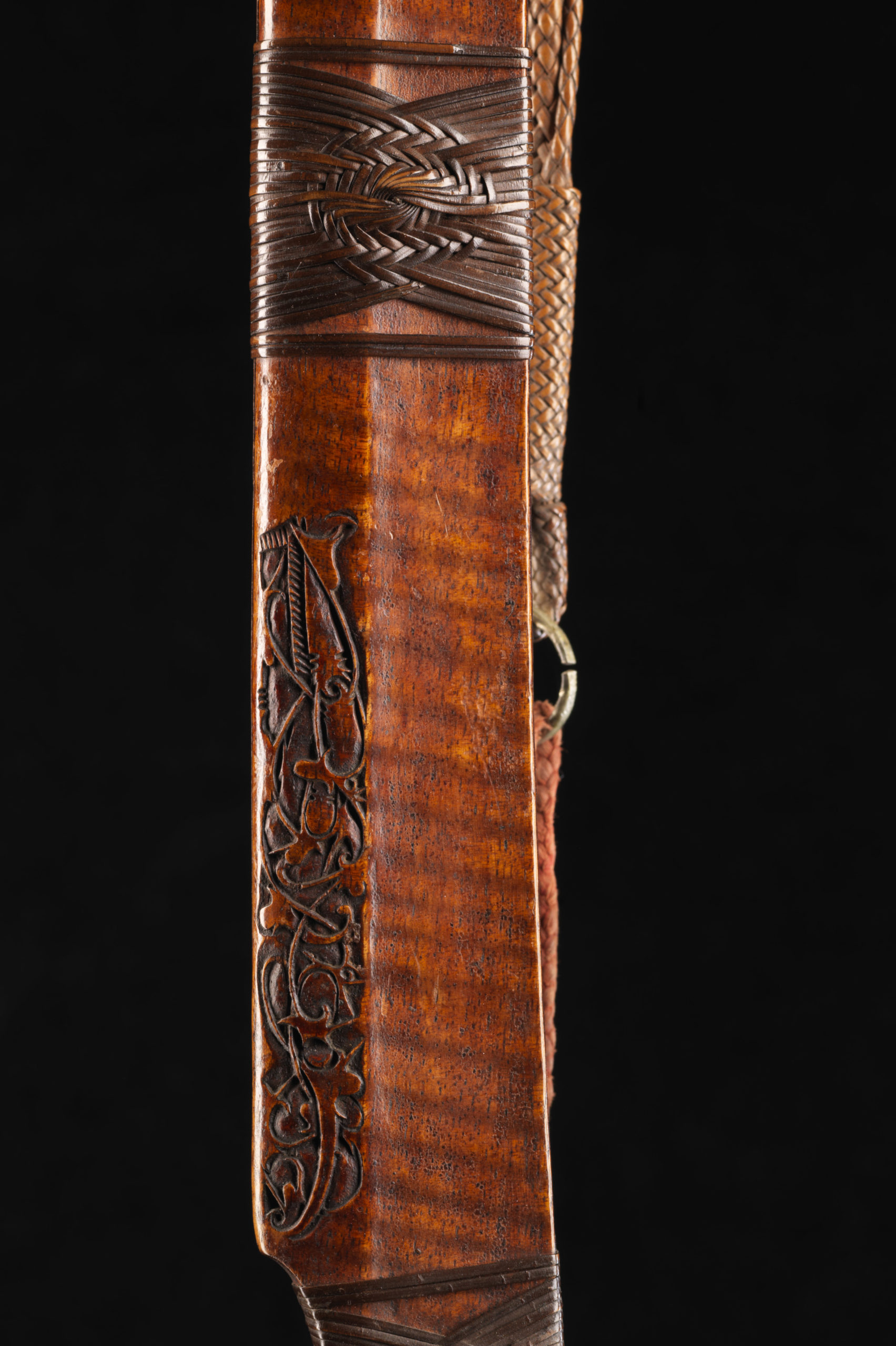Mandau
| Object | Mandau “parang ilang”, “malat” |
| Culture | Borneo, East, Kalimantan, Dayak, Kayan / Bahau |
| Time | before 1880 (provenance proven) |
| Dimensions | Length 68 cm |
| Material | Steel, soft metall, stag horn, rattan, goat hair, wood, animal skin, cord, palm leaf, beads, textiles |
The handle of this mandau, which can be dated before 1880, is ornamentally based on the aso motif. The attached spiral has been dispensed with. One can clearly see here how the body parts of the aso merge into the egel-like (lemetak) projections that are so often associated with the “blood-sucking” of the blade (Heppell 2005). The leech forms are probably more likely to be basically aso-shaped (teeth and claws), which devour or absorb the victim of kayaking, the traditional head-hunting. This is sometimes still visible in bent elements and bars (limbs). Especially towards the top, towards the grip crown, the rows of teeth become more pronounced and indicate that the aso turns towards and receives the “rider”, the seated human being, who is, so to speak, appropriated by the initiation and headhunting. Below the aso, the skull of the kajau victim is visible as a discreet semicircle. The skulls were quasi adopted and received into their own community during the rituals of adoption after the “headhunt” – it is difficult to separate them from their symbolic content as embodiments of pure life energy from the initiators, the future producers of new life.
The carving is deep and vivid and almost seems “Max Ernst-like”. The handle is covered with a very fine rattan weave.
The blade (mata) is simple and unadorned, but of good quality. It is on refined steel, which indicates a production around 1850 or earlier. The shadow of hardness is clearly visible, as all good quality mandau are selective, i.e. only hardened along the cutting edge.
The sheath with the pusat-blanak decorative knots is a work of art of high rank and an exceptional example of mandau sheaths. It is made of particularly beautiful selected ranggu wood (ranggu, coordersiodendron pinnatum, a type of cashew nut) with a three-dimensional lustre (nginden). Ornamental fields, which extend along the back to the top, show the aso in abstract form. It is again vividly visible at the foot. A bone insert (from a human shinbone) forms a subtle colour accent. In the mouth area of the scabbard, the abstract rounded skull motif is visible, reminiscent of the sword’s function. The finely woven carrying strap is appliquéd with red fabric, which picks up on a stylistic element from northern Borneo and is more common on Illanún and Iban swords as well as in Mindanao. In the Muslim world, a strip of fabric is also an appropriate, eloquent detail for a prayer to your weapon.
All in all, this mandau ensemble is of great importance, especially because of the exceptional scabbard.
Supplementing Literature Back to room view




